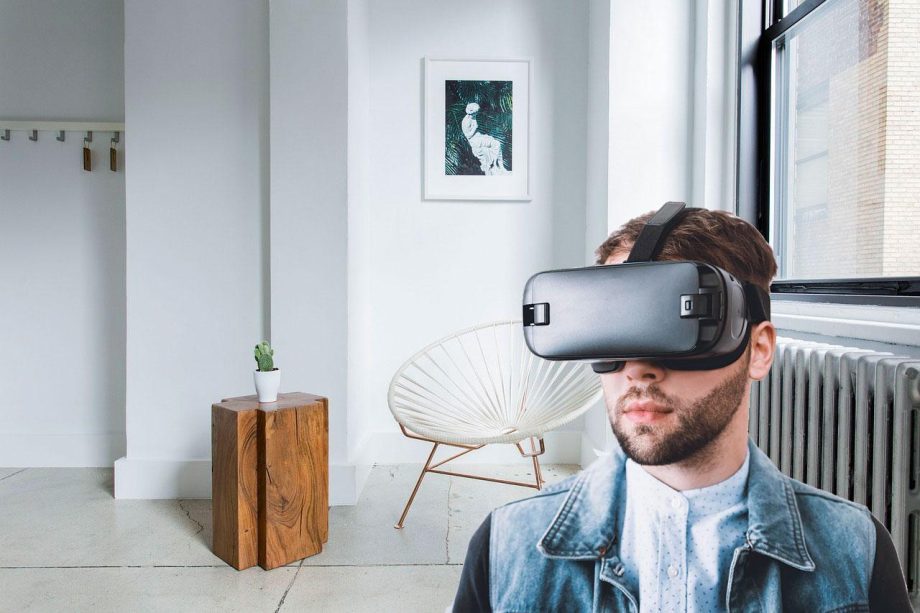What is a Virtual Fitting Room?
Virtual fitting rooms are innovative digital solutions that leverage cutting-edge technologies to revolutionize the online shopping experience. These sophisticated platforms enable consumers to virtually try on clothing and accessories from the comfort of their homes, using advanced augmented reality (AR) and artificial intelligence (AI) algorithms to overlay digital representations of products onto a live video feed or static image of the customer.
By seamlessly integrating with e-commerce platforms, virtual fitting rooms bridge the gap between the convenience of online shopping and the tactile experience of in-store fittings. This technology addresses one of the most significant pain points in online retail: the inability to physically try on items before purchase.
How Virtual Fitting Rooms Work
The functionality of virtual fitting rooms relies on a complex interplay of various technologies:
- Augmented Reality (AR): Forms the foundation by superimposing digital clothing onto real-world images.
- Artificial Intelligence (AI): Powers size recommendations and fit analysis based on user data.
- 3D Body Scanning: Creates accurate digital avatars of users for precise virtual fittings.
- Computer Vision: Enables real-time tracking and adjustment of virtual garments.
- Machine Learning: Continuously improves fit accuracy and personalization over time.
These technologies work in concert to create a seamless and realistic virtual try-on experience. For instance, when a user accesses a virtual fitting room, the system first captures their body measurements through either a 3D body scan or by analyzing uploaded photos. AI algorithms then process this data to create a digital avatar or map the user’s proportions.
When a customer selects an item to try on, the AR technology overlays a 3D rendering of the garment onto the user’s image or avatar. The AI adjusts the fit based on the user’s measurements and the garment’s properties, while computer vision ensures that the virtual clothing moves and drapes realistically as the user moves or changes position.
Key Players in the Market
The virtual fitting room market has seen rapid growth, with several companies emerging as leaders in this innovative space. Here’s a comparison of some prominent virtual fitting room providers:
| Company | Key Features | Pricing Model | Notable Clients |
|---|---|---|---|
| PICTOFiT | 3D body scanning, AI-powered size recommendations | Subscription-based | Adidas, Tommy Hilfiger |
| Style.me | AR try-on, integration with existing e-commerce platforms | Pay-per-use and subscription options | Calvin Klein, Levi’s |
| AstraFit | Size recommendation engine, fit visualization | Tiered pricing based on website traffic | Macy’s, Marks & Spencer |
| Virtusize | Garment-to-garment comparison, fit prediction | Custom pricing for enterprise solutions | ASOS, Acne Studios |
These companies offer a range of solutions tailored to different retailer needs and budgets. For example, PICTOFiT’s advanced 3D body scanning technology provides highly accurate measurements, while Style.me’s AR try-on feature offers a more visually engaging experience. AstraFit focuses on precise size recommendations, and Virtusize allows customers to compare new items with clothes they already own.
Benefits of Virtual Fitting Rooms
The adoption of virtual fitting rooms brings a multitude of advantages for both retailers and consumers, significantly enhancing the online shopping experience. These digital solutions address key challenges in e-commerce, from improving customer satisfaction to boosting retailers’ bottom lines.
Increased Sales and Conversion Rates
Virtual fitting rooms have demonstrated a remarkable ability to boost customer confidence and drive sales. By providing a more accurate representation of how items will look and fit, these tools help overcome one of the main barriers to online clothing purchases: uncertainty about fit and appearance.
| Metric | Improvement with Virtual Fitting Rooms |
|---|---|
| Conversion Rate | Up to 100% increase |
| Average Order Value | 20-30% increase |
| Customer Engagement | 70% longer time spent on site |
For instance, luxury brand Rebecca Minkoff reported a 44% increase in sales after implementing virtual fitting room technology. This substantial boost in conversions can be attributed to several factors:
- Enhanced product visualization
- Increased customer confidence in purchases
- Reduced hesitation due to fit concerns
- Improved overall shopping experience
Enhanced Customer Convenience
Virtual fitting rooms offer unparalleled convenience for online shoppers, addressing several pain points in the traditional e-commerce experience:
- 24/7 Availability: Customers can try on clothes anytime, anywhere, without the constraints of store hours or location.
- No Physical Changing Rooms: Eliminates the need to undress in unfamiliar environments, a significant benefit for those with body image concerns or mobility issues.
- Rapid Size Recommendations: AI-powered algorithms quickly suggest the best size based on individual measurements, saving time and reducing confusion.
- Easy Comparison: Shoppers can easily compare multiple sizes or styles side-by-side, a task that would be time-consuming in a physical store.
- Personalized Styling: Some advanced systems offer styling suggestions based on body type and personal preferences.
This enhanced convenience not only improves the customer experience but also encourages more frequent shopping and increases customer loyalty to brands offering this technology.
Reduced Return Rates
One of the most significant benefits of virtual fitting rooms for retailers is the substantial reduction in return rates. Returns are a major challenge in e-commerce, particularly for clothing retailers, due to sizing issues and unmet expectations regarding fit or appearance.
Virtual fitting rooms address this problem by providing customers with a more accurate preview of how items will look and fit before purchase. This leads to more informed buying decisions and, consequently, fewer returns.
| Company | Return Rate Reduction |
|---|---|
| Zeekit | 36% |
| Virtusize | Up to 50% |
| AstraFit | 25-30% |
For example, Zeekit, a virtual fitting room provider, reported a 36% reduction in return rates for its clients. This significant decrease not only saves retailers money on processing returns and restocking but also improves customer satisfaction and reduces the environmental impact of reverse logistics.
Challenges and Limitations

Despite the numerous advantages offered by virtual fitting rooms, the technology still faces several challenges and limitations that need to be addressed for wider adoption and improved user experience.
Privacy and Data Security Concerns
The collection and storage of detailed body measurements and personal data raise significant privacy and security concerns:
- Data Collection: Virtual fitting rooms require access to sensitive personal information, including body measurements and sometimes images or 3D scans of users’ bodies.
- Data Storage: There are concerns about how this data is stored, who has access to it, and how long it is retained.
- Data Usage: Questions arise about whether the collected data could be used for purposes other than fitting room simulations, such as targeted advertising.
- Regulatory Compliance: Companies must ensure compliance with data protection regulations like GDPR and CCPA.
To address these concerns, companies implementing virtual fitting room technology should:
- Implement robust encryption and security measures
- Provide clear, transparent privacy policies
- Offer opt-out options for data collection
- Regularly audit and update security protocols
- Obtain explicit consent for data collection and usage
- Anonymize data where possible to protect individual privacy
Accuracy and User Trust
The effectiveness of virtual fitting rooms heavily relies on the accuracy of their simulations and size recommendations. Discrepancies between virtual and actual fit can lead to user frustration and erode trust in the technology.
Challenges in achieving accuracy include:
- Variations in fabric properties and draping
- Differences in individual body shapes and proportions
- Limitations in current 3D modeling and AR technologies
- Inconsistencies in sizing across different brands
To enhance accuracy and build user trust, virtual fitting room providers should focus on:
- Improving 3D modeling and AR technologies
- Incorporating more sophisticated fabric simulation algorithms
- Expanding databases of body types and garment measurements
- Implementing user feedback loops to continually refine recommendations
- Providing clear communication about the limitations of the technology
- Offering easy-to-understand fit ratings and confidence scores
Future Trends and Predictions
The future of virtual fitting rooms looks promising, with continuous advancements in technology set to revolutionize the online shopping experience further. As we move forward, we can expect to see more sophisticated and integrated solutions that blur the lines between physical and digital retail.
Integration with AI and Machine Learning
Artificial Intelligence and Machine Learning are poised to play an increasingly crucial role in refining virtual fitting experiences:
- Hyper-Personalization: AI algorithms will analyze vast amounts of data to provide highly personalized fit recommendations and style suggestions.
- Predictive Analytics: Machine learning models will anticipate fashion trends and consumer preferences, helping retailers optimize inventory.
- Dynamic Pricing: AI-driven systems will adjust pricing in real-time based on fit confidence and likelihood of returns.
- Virtual Stylists: Advanced AI chatbots will act as personal stylists, offering fashion advice and outfit recommendations.
- Emotion Recognition: AI-powered systems will analyze facial expressions and body language to gauge user reactions to virtual try-ons.
These AI-driven innovations will not only enhance the accuracy of virtual fittings but also create a more engaging and personalized shopping experience.
Expansion of AR and VR Technologies
The continued development of Augmented Reality (AR) and Virtual Reality (VR) technologies will drive the next wave of innovation in virtual fitting rooms:
| Technology | Predicted Impact | Estimated Market Growth by 2025 |
|---|---|---|
| AR in Retail | Enhanced in-store and at-home try-on experiences | $7.05 billion |
| VR in E-commerce | Immersive virtual shopping environments | $1.4 billion |
| Mixed Reality | Blending of physical and digital shopping experiences | $3.7 billion |
Key developments in AR and VR for virtual fitting rooms include:
- Full-Body AR Mirrors: Advanced AR mirrors in physical stores will allow customers to quickly try on multiple outfits without changing clothes.
- VR Shopping Malls: Virtual reality environments will enable users to browse and try on items in immersive digital stores.
- Haptic Feedback: Integration of haptic technology will allow users to “feel” fabrics and textures in virtual environments.
- Social Shopping Experiences: AR and VR will facilitate shared virtual shopping experiences with friends or stylists.
- 3D Printed Custom Fit: VR fitting data could be used to create perfectly fitted garments using 3D printing technology.
As these technologies mature, we can expect virtual fitting rooms to become more immersive, accurate, and integral to the shopping experience, both online and in physical stores.
Virtual fitting rooms represent a significant leap forward in e-commerce technology, offering solutions to long-standing challenges in online clothing retail. By providing enhanced convenience, reducing return rates, and delivering personalized shopping experiences, these digital tools are set to transform the fashion industry. As technology continues to evolve, virtual fitting rooms will likely become an indispensable part of the retail landscape, bridging the gap between the digital and physical shopping worlds and ushering in a new era of personalized, efficient, and engaging online retail experiences.

